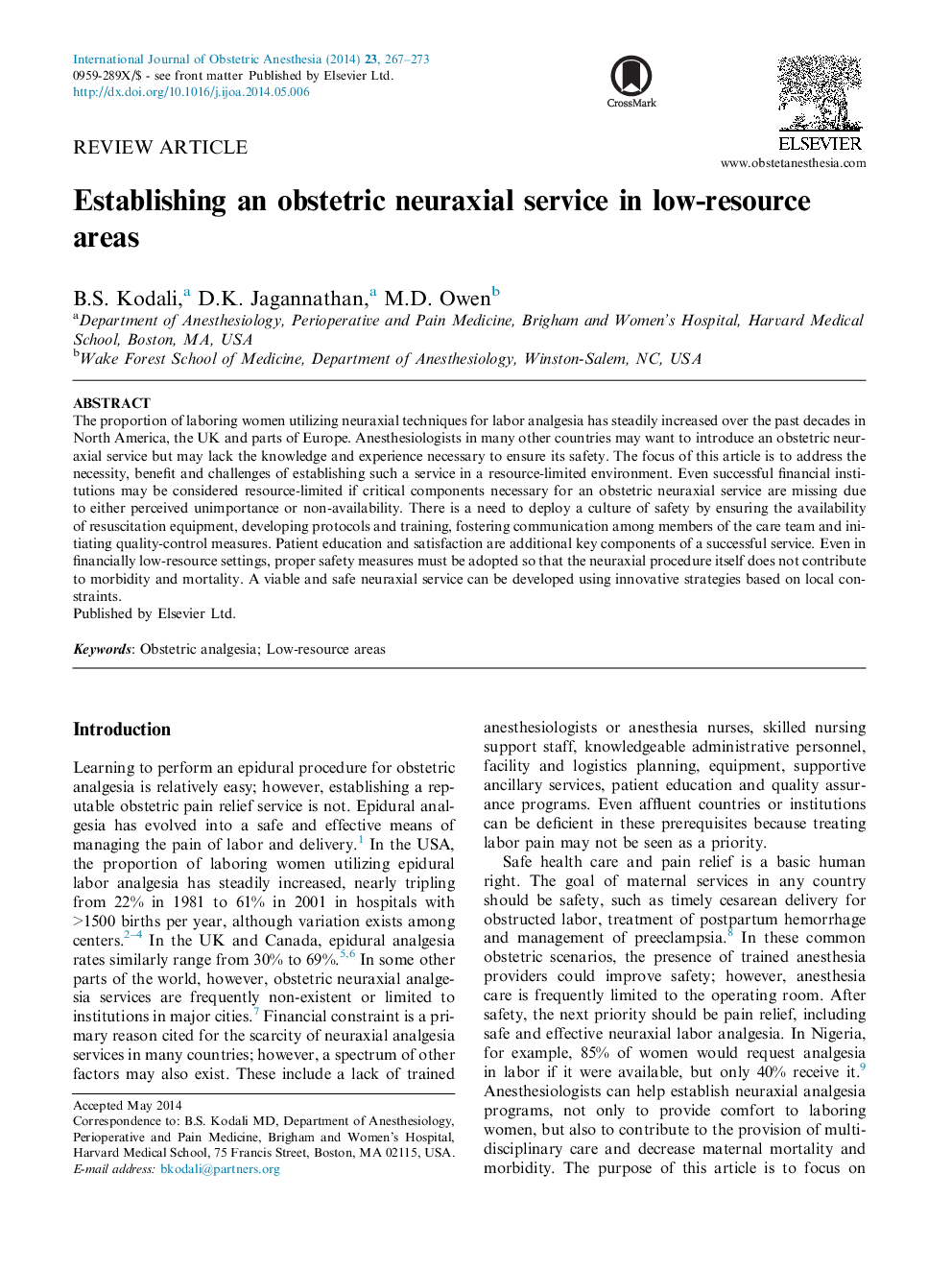| Article ID | Journal | Published Year | Pages | File Type |
|---|---|---|---|---|
| 5883293 | International Journal of Obstetric Anesthesia | 2014 | 7 Pages |
â¢There is an increasing demand for obstetric neuraxial services around the world.â¢Request to provide service can originate from several sources.â¢In depth understanding of the prerequisites of a functional unit is mandatory.â¢Patient safety should be the prime focus in the establishment of a neuraxial unit.â¢Strategic innovations are key to long term viability of obstetric neuraxial unit.
The proportion of laboring women utilizing neuraxial techniques for labor analgesia has steadily increased over the past decades in North America, the UK and parts of Europe. Anesthesiologists in many other countries may want to introduce an obstetric neuraxial service but may lack the knowledge and experience necessary to ensure its safety. The focus of this article is to address the necessity, benefit and challenges of establishing such a service in a resource-limited environment. Even successful financial institutions may be considered resource-limited if critical components necessary for an obstetric neuraxial service are missing due to either perceived unimportance or non-availability. There is a need to deploy a culture of safety by ensuring the availability of resuscitation equipment, developing protocols and training, fostering communication among members of the care team and initiating quality-control measures. Patient education and satisfaction are additional key components of a successful service. Even in financially low-resource settings, proper safety measures must be adopted so that the neuraxial procedure itself does not contribute to morbidity and mortality. A viable and safe neuraxial service can be developed using innovative strategies based on local constraints.
